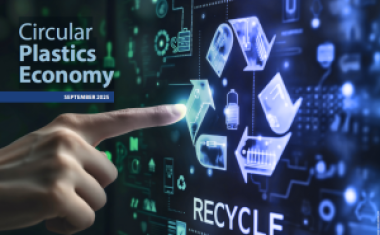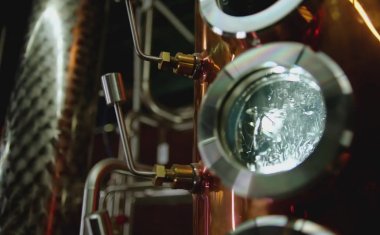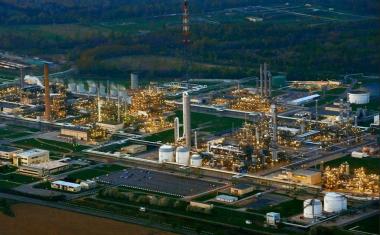New Water-Splitting Catalyst Found

Expanding on work published two years ago, MIT's Daniel Nocera and his associates have found yet another formulation, based on inexpensive and widely available materials, that can efficiently catalyze the splitting of water molecules using electricity. This could ultimately form the basis for new storage systems that would allow buildings to be completely independent and self-sustaining in terms of energy: The systems would use energy from intermittent sources like sunlight or wind to create hydrogen fuel, which could then be used in fuel cells or other devices to produce electricity or transportation fuels as needed.
Nocera, the Henry Dreyfus Professor of Energy and Professor of Chemistry, says that solar energy is the only feasible long-term way of meeting the world's ever-increasing needs for energy, and that storage technology will be the key enabling factor to make sunlight practical as a dominant source of energy. He has focused his research on the development of less-expensive, more-durable materials to use as the electrodes in devices that use electricity to separate the hydrogen and oxygen atoms in water molecules. By doing so, he aims to imitate the process of photosynthesis, by which plants harvest sunlight and convert the energy into chemical form.
Nocera pictures small-scale systems in which rooftop solar panels would provide electricity to a home, and any excess would go to an electrolyzer - a device for splitting water molecules - to produce hydrogen, which would be stored in tanks. When more energy was needed, the hydrogen would be fed to a fuel cell, where it would combine with oxygen from the air to form water, and generate electricity at the same time.
An electrolyzer uses two different electrodes, one of which releases the oxygen atoms and the other the hydrogen atoms. Although it is the hydrogen that would provide a storable source of energy, it is the oxygen side that is more difficult, so that's where he and many other research groups have concentrated their efforts. In a paper in Science in 2008, Nocera reported the discovery of a durable and low-cost material for the oxygen-producing electrode based on the element cobalt.
Now, in research being reported this week in the journal Proceedings of the National Academy of Science (PNAS), Nocera, along with postdoctoral researcher Mircea Dinca and graduate student Yogesh Surendranath, report the discovery of yet another material that can also efficiently and sustainably function as the oxygen-producing electrode. This time the material is nickel borate, made from materials that are even more abundant and inexpensive than the earlier find.
Even more significantly, Nocera says, the new finding shows that the original compound was not a unique, anomalous material, and suggests that there may be a whole family of such compounds that researchers can study in search of one that has the best combination of characteristics to provide a widespread, long-term energy storage technology.
"Sometimes if you do one thing, and only do it once," Nocera says, "you don't know - is it extraordinary or unusual, or can it be commonplace?" In this case, the new material "keeps all the requirements of being cheap and easy to manufacture" that were found in the cobalt-based electrode, he says, but "with a different metal that's even cheaper than cobalt."
But the research is still in an early stage. "This is a door opener," Nocera says. "Now, we know what works in terms of chemistry. One of the important next things will be to continue to tune the system, to make it go faster and better. This puts us on a fast technological path." While the two compounds discovered so far work well, he says, he is convinced that as they carry out further research even better compounds will come to light. "I don't think we've found the silver bullet yet," he says.
Already, as the research has continued, Nocera and his team have increased the rate of production from these catalysts a hundredfold from the level they initially reported two years ago. In addition, while the earlier paper and the new report focus on electrodes on the oxygen-producing side, originally the other electrode, which produced hydrogen, included the use of a relatively expensive platinum catalyst. But in further work, "we have totally gotten rid of the platinum of the hydrogen side," Nocera says. "That's no longer a concern for us," he says, although that part of the research has not yet been formally reported.
The original discovery has already led to the creation of a company, called Sun Catalytix, that aims to commercialize the system in the next two years. And his research program was recently awarded a major grant from the U.S. Department of Energy's Advanced Research Projects Agency - Energy.
















